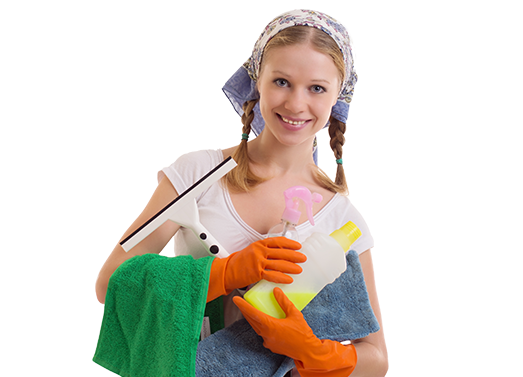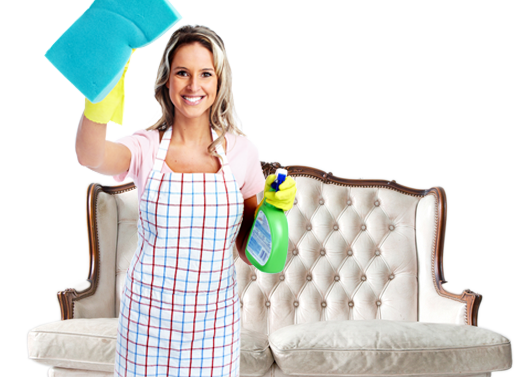Air Wellness: The Essential Practice of Maintaining Clean Indoor Air
Posted on 30/08/2025
Air Wellness: The Essential Practice of Maintaining Clean Indoor Air
Introduction: Understanding Air Wellness
Air wellness--the commitment to ensuring high-quality indoor air--has rapidly become a cornerstone of a healthy lifestyle. With people spending up to 90% of their time indoors, the air we breathe at home, work, and in public spaces is as vital as the food we eat and the water we drink. Clean indoor air isn't just a luxury; it's an absolute necessity for physical and mental well-being. This comprehensive guide explores the essentials of maintaining healthy indoor air, its myriad health benefits, and actionable tips to transform every breath you take.

Why Air Wellness Matters
The focus on air quality in indoor environments stems from both immediate and long-term health concerns. Poor indoor air is linked to respiratory issues, allergies, fatigue, even chronic diseases. Implementing a robust air wellness routine is crucial in mitigating these risks and promoting optimal living conditions.
Core Reasons for Emphasizing Air Quality:
- Physical Health: Fresh and filtered air reduces the burden of airborne pollutants on respiratory and cardiovascular systems.
- Mental Clarity: Studies reveal a connection between clean air and improved cognitive function.
- Well-being of Vulnerable Groups: Children, the elderly, and individuals with chronic illnesses benefit the most from clean air environments.
What is Air Wellness?
Air wellness refers to a holistic practice of monitoring, managing, and continuously improving the indoor air environment. It includes reducing contaminants, optimizing humidity, ensuring proper ventilation, and harnessing technology and natural methods to maintain air quality.
Key Elements of Air Wellness Include:
- Monitoring indoor pollution levels
- Removing or minimizing sources of contaminants
- Employing filtration and purification systems
- Encouraging natural airflow and ventilation
- Maintaining optimal humidity levels
Common Indoor Air Pollutants
Before embarking on your air wellness journey, it's essential to recognize typical indoor pollutants. Many are invisible yet contribute significantly to indoor air pollution.
Prominent Indoor Air Contaminants:
- Particulate Matter (PM2.5 & PM10): Tiny particles from dust, smoke, and combustion sources.
- Volatile Organic Compounds (VOCs): Emissions from paints, cleaning products, furnishings, and more.
- Biological pollutants: Mold spores, animal dander, bacteria, and pollen.
- Carbon Monoxide (CO): Generated by gas stoves, fireplaces, or car exhaust.
- Formaldehyde: Often emitted from pressed wood products and some textiles.
- Radon: A naturally occurring radioactive gas that can seep into buildings from soil.
Health Effects of Poor Indoor Air Quality
The impact of indoor air pollution extends beyond simple discomfort. Here are some ways poor air wellness can affect health:
- Short-term symptoms: Eye, nose and throat irritation, headaches, dizziness, fatigue and allergies.
- Long-term effects: Asthma, respiratory illnesses, cardiovascular diseases, neurological issues, even cancer (for example, after prolonged radon exposure).
These risks underscore the importance of continuous indoor air quality improvement and practicing diligent air wellness.
Sources of Indoor Air Pollution
Achieving clean indoor air starts by identifying and controlling the main sources of pollution inside your living and work spaces.
Main Sources Include:
- Smoke: From cigarettes, incense, or cooking.
- Poor ventilation: Traps pollutants and increases their concentrations indoors.
- Building materials: Paints, varnishes, flooring, and adhesives can emit chemicals.
- Household products: Cleaning sprays, aerosols, detergents, air fresheners.
- Mold and dampness: Caused by leaks, poor drainage, or high humidity.
- Pets: Dander, fur, and dust mites.
- Occupants: Human activity (cooking, cleaning, hobbies) and bio-effluents add to the burden.
Best Practices for Air Wellness & Cleaner Indoor Air
There are both simple and advanced methods to enhance indoor air wellness and promote healthier living:
1. Ensure Proper Ventilation
- Open windows and doors regularly to facilitate fresh air exchange.
- Install exhaust fans in kitchens and bathrooms to expel moisture and fumes.
- Consider heat recovery ventilators (HRVs) or energy recovery ventilators (ERVs) for improved energy-efficient air circulation.
2. Use High-Quality Air Purifiers
- Invest in HEPA (High Efficiency Particulate Air) filter-based purifiers to remove fine particles.
- Choose purifiers with activated carbon filters to reduce odors and VOCs.
- Regularly clean and replace filters as instructed by the manufacturer.
3. Control Humidity Levels
- Maintain relative humidity between 30-50% to inhibit mold, dust mites, and bacteria.
- Use dehumidifiers in damp environments and humidifiers in dry climates.
- Fix leaks and ensure proper drainage around your property.
4. Bring in Air-Cleaning Plants
- Certain plants, like peace lilies, spider plants, and snake plants, help absorb toxins and release oxygen.
- Research which indoor plants are safe for children and pets.
5. Minimize Chemical Usage
- Opt for natural, fragrance-free cleaning products.
- Avoid aerosol sprays and harsh chemicals when possible.
- Store chemicals in well-ventilated areas away from living spaces.
6. Regular Cleaning and Maintenance
- Vacuum and dust frequently using HEPA-filter vacuums.
- Launder bedding, curtains, and upholstery regularly to reduce dust mites and allergens.
- Clean air ducts, vents, and HVAC systems periodically.
7. Test for Hidden Dangers
- Check for radon with a home test kit, especially in basements.
- Test for mold if you suspect hidden moisture issues.
- Schedule professional indoor air quality assessments for thorough evaluation.
The Role of Technology in Air Wellness
The digital age empowers homeowners and facility managers to tackle indoor air pollution using smart technology:
- Smart Air Quality Monitors: Real-time data on PM2.5, VOCs, temperature, and humidity levels.
- Automated Ventilation: Systems that adjust airflow based on detected pollution levels.
- Integrated Home Systems: Connect air purification and HVAC for automated responses to air quality fluctuations.
Air Wellness in Different Spaces
Whether in homes, offices, or schools, maintaining clean indoor air requires customized strategies:
Home Environments
- Focus on bedrooms and living rooms, where people spend the most time.
- Ban indoor smoking and minimize pet dander exposure, especially if allergic individuals are present.
Workplaces
- Regularly service ventilation and HVAC systems to maintain optimal performance.
- Eliminate strong-smelling or polluting office supplies; encourage green cleaning practices.
- Provide access to outdoor air through operable windows where possible.
Schools and Daycares
- Integrate learning about air wellness into educational programs.
- Monitor CO2 and humidity in crowded areas to prevent stuffiness and outbreaks.
Benefits of Practicing Air Wellness
Committing to air wellness and consistently striving for clean indoor air fosters numerous advantages:
- Better Respiratory Health: Reduced asthma, allergy, and bronchitis symptoms.
- Increased Productivity: Improved concentration and performance at work and school.
- Better Sleep: Elimination of airborne irritants that can disturb rest.
- Enhanced Comfort: Spaces that smell fresh and feel comfortable to breathe in.
- Longevity of Furnishings and Structures: Less mold, mildew, and dust preserves buildings and possessions.
- Peace of Mind: The knowledge that you and your loved ones are in a healthier environment.
Frequently Asked Questions about Air Wellness
How Can I Measure Air Quality at Home?
Use an air quality monitor to track levels of particulate matter, VOCs, humidity, and temperature. Many affordable models are available for home use.
What Are Simple Ways to Improve Indoor Air?
Open your windows regularly, vacuum frequently, avoid smoking indoors, and use houseplants known for purifying the air.
Are Air Purifiers Worth the Investment?
*Yes*, especially where pollution sources are constant (urban living, allergy-prone spaces, or after renovation). Choose HEPA-certified models for the best early results.
How Often Should I Change My HVAC Filters?
Replace HVAC filters every 2-3 months, or according to manufacturer's recommendations. Homes with pets or high dust may require more frequent changes.

Conclusion: Make Air Wellness Your Daily Practice
Air wellness is not a one-time achievement, but an ongoing journey. By being proactive--whether through daily habits, investing in technology, or simply staying informed--you can protect yourself and your loved ones from the invisible dangers of indoor air pollution. The rewards of fresh, invigorating indoor air are profound: better health, greater comfort, and a thriving home or workspace. Start your air wellness routine today for a fresher, healthier tomorrow!
Key Takeaways for Cleaner Indoor Air
- Prioritize ventilation and filtration for immediate improvements.
- Remove and minimize indoor sources of pollution wherever possible.
- Regularly monitor, clean, and upgrade your air wellness strategies.
- Empower yourself and others with air quality knowledge.
Remember, the essential practice of maintaining clean indoor air starts with your commitment to air wellness. Every breath counts!



